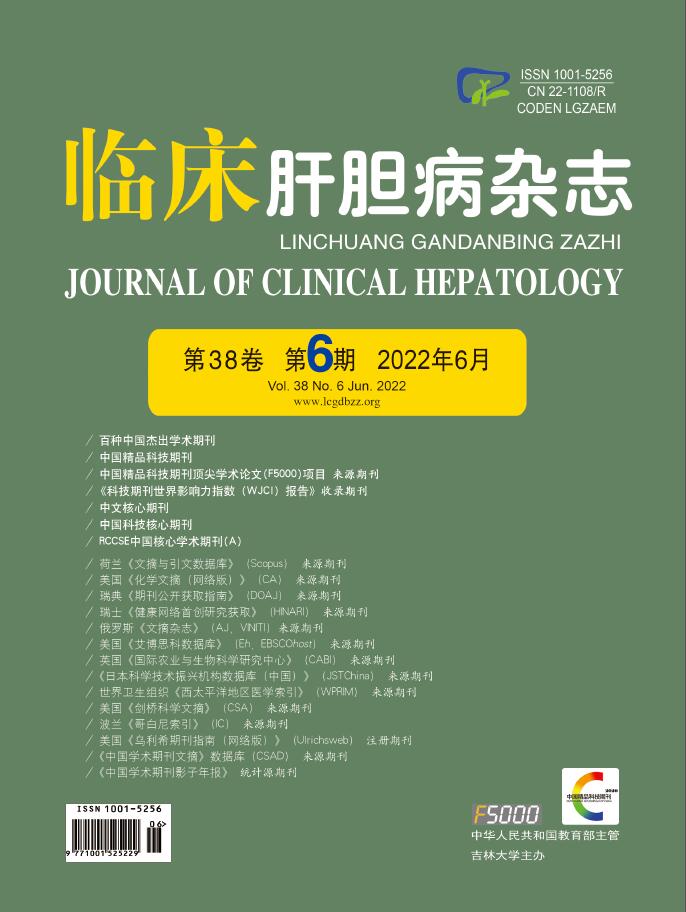| [1] |
JIN L, ZOU YH. Expert consensus of percutaneous transhepatic biliary drainage and stent implantation in treatment of obstructive jaundice (2018 Edition)[J]. Chin J Interv Imaging Ther, 2019, 16(1): 2-7. DOI: 10.13929/j.1672-8475.201810014. |
| [2] |
UBEROI R, DAS N, MOSS J, et al. British Society of Interventional Radiology: Biliary drainage and stenting registry (BDSR)[J]. Cardiovasc Intervent Radiol, 2012, 35(1): 127-138. DOI: 10.1007/s00270-011-0103-4. |
| [3] |
NICOLETTI A, PONZIANI FR, NARDELLA E, et al. Biliary tract microbiota: A new kid on the block of liver diseases?[J]. Eur Rev Med Pharmacol Sci, 2020, 24(5): 2750-2775. DOI: 10.26355/eurrev_202003_20548. |
| [4] |
LIU J, LIU B, LI HF, et al. Etiological analysis of biliary tract infection[J]. Chin J Nosocomiol, 2018, 28(20): 3111-3114. DOI: 10.11816/cn.ni.2018-182836. |
| [5] |
CAI YL, LIU YG, ZHANG L, et al. Distribution of pathogenic bacteria and clinical characteristics in patients with biliary tract infections[J]. Chin J Nosocomiol, 2016, 26(8): 1801-1803. DOI: 10.11816/cn.ni.2016-152999. |
| [6] |
WANG ZG, PAN LY, XU JL, et al. An analysis of distribution and drug resistance of pathogens of patients with biliary tract infection[J]. Chin J Exp Surg, 2015, 32(8): 1973-1975. DOI: 10.3760/cma.j.issn.1001-9030.2015.08.067. |
| [7] |
SAAD WE, WALLACE MJ, WOJAK JC, et al. Quality improvement guidelines for percutaneous transhepatic cholangiography, biliary drainage, and percutaneous cholecystostomy[J]. J Vasc Interv Radiol, 2010, 21(6): 789-795. DOI: 10.1016/j.jvir.2010.01.012. |
| [8] |
PAN ZB, WANG YH, KONG Z, et al. Effects of different preoperative biliary drainage methods on bile bacterial culture and drug resistence of malignant obstructive jaundice[J]. Chin J Dig Surg, 2021, 20(11): 1191-1200. DOI: 10.3760/cma.j.cn115610-20210916-00467. |
| [9] |
|
| [10] |
Biliary Surgery Group of Surgery Branch of Chinese Medical Association. Guidelines for diagnosis and treatment of acute biliary tract infections(2021)[J]. Chin J Surg, 2021, 59(6): 422-429. DOI: 10.3760/cma.j.cn112139-20210421-00180. |
| [11] |
China Antimicrobial Resistance Surveillance System. Antimicrobial resistance of bacteria: Surveillance report from China Antimicrobial Resistance Surveillance System in 2014-2019[J]. Chin J Infect Control, 2021, 20(1): 15-30. DOI: 10.3760/cma.j.cn112139-20210421-00180. |















 DownLoad:
DownLoad:
